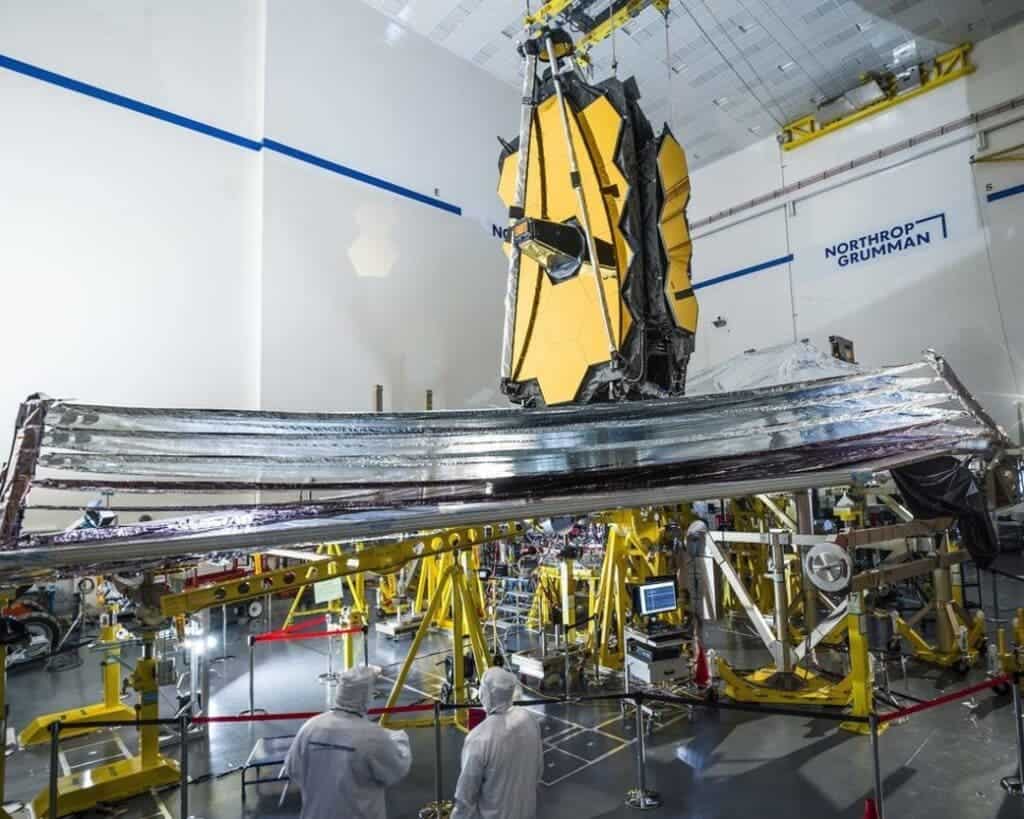It took a few more days than expected but the enormous 21-meter (70-foot) sunshield of the James Webb Space Telescope has now been deployed, an important milestone that brings the telescope closer and closer to becoming operational. NASA team members clapped and cheered as they followed the process, but there’s still a bit left to go before the telescope can commence operations.

The telescope, which cost $10 billion and was launched on Christmas Day, is the most powerful ever sent to space, with a mirror six times bigger than the one included in the Hubble. It has been carefully unfolding in zero gravity for days. While all the required setup steps are tricky, setting up the sunshield was considered the most difficult part.
It was a big moment for the engineering teams at NASA and the American aerospace manufacturer Northrop Grumman, the main contractor for the telescope. Years of testing on sub-scale and full-scale models paid off as controllers separated the five layers of the sunshield and tensioned them – all controlled remotely from Earth.
“This is the first time anyone has ever attempted to put a telescope this large into space,” Thomas Zurbuchen, associate administrator for NASA’s Science Mission Directorate, said in a statement. The success of its most challenging deployment – the sunshield – is an incredible testament to the human ingenuity and engineering skill.”
The very important sunshield
The sunshield will safeguard the telescope from the heat and the light of the Earth, Sun, and Moon. The five plastic layers are as thin as a human hair and are coated with reflective metal. Together, they reduce exposure from the Sun from 200 kilowatts to a fraction of a watt – crucial to keep the scientific instruments cold enough to work.
The team at NASA had delayed the sunshield deployment and tensioning to make sure Webb’s power systems were good to go. The task meant using 139 of the 178 release mechanisms included in the telescope, as well as eight deployment motors, 400 pulleys, and 90 cables. Any mistakes at this part could have doomed the telescope.
“Unfolding Webb’s sunshield in space is an incredible milestone, crucial to the success of the mission,” Gregory L. Robinson, Webb’s program director at NASA, said in a statement. “Thousands of parts had to work with precision for this marvel of engineering to fully unfurl. The team has accomplished an audacious feat with the complexity of this deployment.”
While it all went smoothly, several steps still remain for the telescope to become operational – including the deployment of the telescope’s main and secondary mirrors. This would start this weekend and last for 10 days. It’s the biggest mirror NASA has ever built, so big that engineers had to design the Webb as moving parts that can fold in the rocket.
The telescope is now on its way to its job site, a million miles from Earth, where it will sit in a solar orbit and be held stable by the gravitational pull of the Sun and the Earth. Once fully operational, the telescopes will look at all aspects of cosmic history. Thanks to its infrared observations, it can look deeper into the universe and even look back in time, enabling us an unprecedented view into the very depths of the universe.
Was this helpful?



